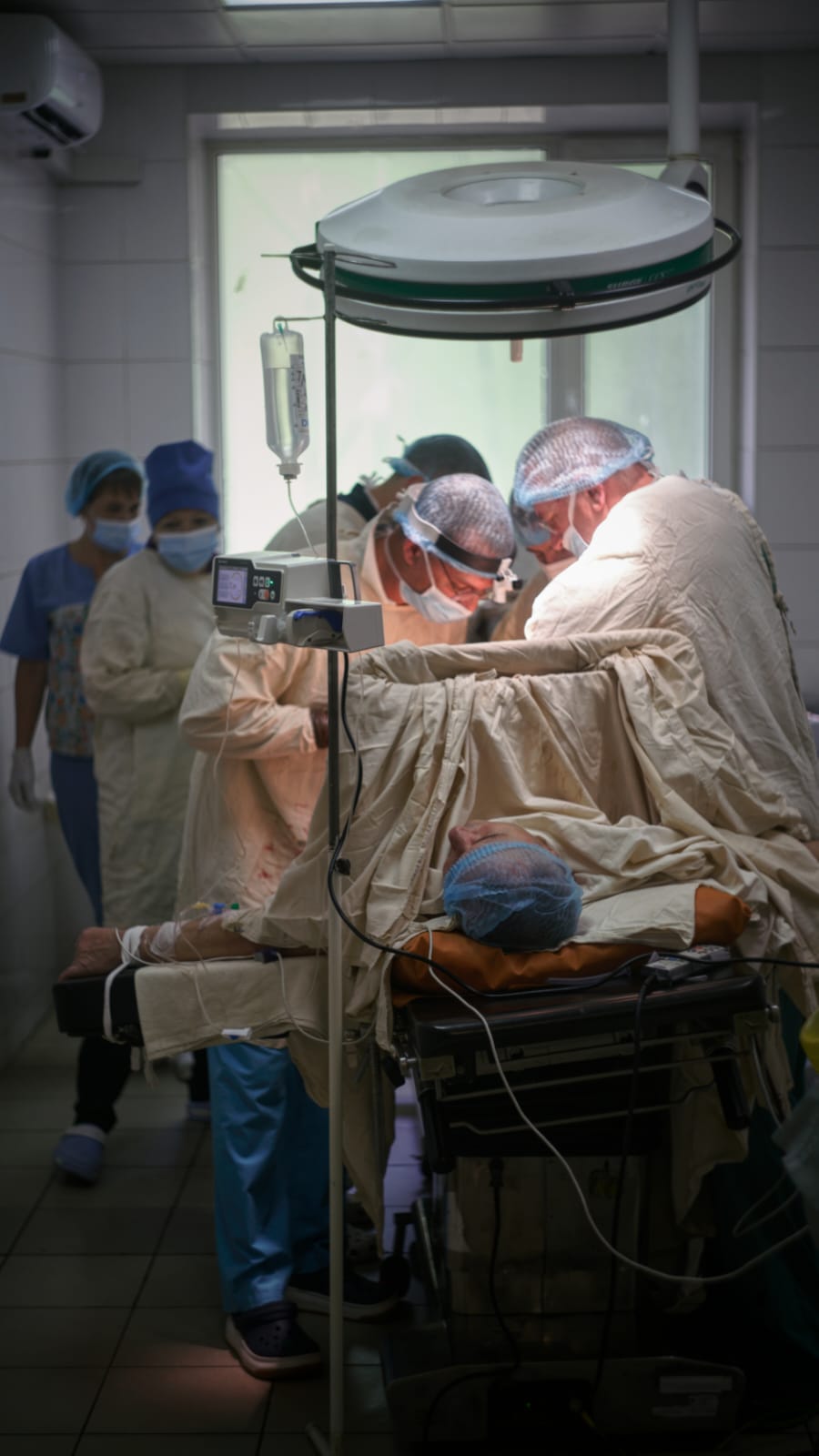Above a set of double doors, a digital screen flashes the words “attention” and “operation” in Ukrainian.

Three male patients are being worked on in three surgical spaces all of varying sizes.
The doors to the rooms are all open, allowing for roughly a half dozen other health-care professionals to hurriedly move from one room to another as they’re called by name or beckoned by a sounding alarm on a piece of medical equipment.
Dr. Igor Lozhkin occupies the larger room where his patient can be heard snoring over the sound of running water. Speaking in English, the Ukrainian traumatologist explains the team is cleaning debris from a wound on the soldier’s lower leg.
A cement mixture will be used as a temporary fix for the fractured tibia until another surgery can be done. Bone will be taken from elsewhere in the patient’s body — possibly his pelvis — and used as a graft.
“It’s not a big injury, actually,” said Dr. Lozhkin, explaining they see much worse on a daily basis.
In the 16 months since Russia launched its full-scale invasion of Ukraine, trauma surgeons and the teams that work with them have been inundated. Soldiers come to this medical centre in the Kyiv region from the front lines after they have been stabilized.
“One surgery can go from 8 a.m. to 5 a.m.,” said Dr. Lozhkin, adding that the number of operations he performs depends on the severity of his patient’s injuries.

Get daily National news
There have been days where he’s worked on 10 different patients.
“Ten patients in civil life is not too much but 10 patients in combat trauma — you have to control all the indictors,” explained Dr. Lozhkin.
Anesthesiologist Dmitro Sukhomovskiy is one of the staff members bouncing in and out of all three operating rooms checking on the patients.
“Yeah, yeah, always busy. Everybody stays here and works for our guys,” said Sukhomovskiy.
Like many others, Sukhomovskiy also completed a rotation near the front lines, explaining that when he was in the Donetsk region in the east it was even busier because there were many more badly wounded citizens and soldiers.
“At first it’s very difficult because we sleep only two hours a day,” said Sukhomovskiy.
The Ukrainian government does not publish information about the number of its soldiers killed or wounded. But a cache of documents reported to be secret American intelligence was leaked online in April and said 354,000 Russian and Ukrainian soldiers have been killed or injured since Feb. 24, 2022.
One of the bloodiest and longest battles of this war so far is taking place around the city of Bakhmut in the Donetsk region.
Ukrainian President Volodymyr Zelenskyy said in May that Russian forces had “completely destroyed” the city.

In addition to Russian forces, the private mercenary Wagner Group was fighting there with its highly skilled members, but also with Russian convicts released from prison in order to fight.
Yevgeny Prigozhin, Wagner’s leader, said his men captured the entire city of Bakhmut on May 21st but that was disputed by Ukrainian officials.
Battles there have included everything from up-close trench-style combat to duelling artillery.
Ukrainian soldier Stepan Barash says he went to Bakhmut on April 3 with orders to hold the Russians back. Sitting on a hospital bed in a different ward of the military hospital, he told Global News in Ukrainian through a translator that he was injured during a mortar attack May 9, injuring his back and arm.
“They fired at us constantly, around the clock,” Barash said.
He recounted horrible ways in which his fellow soldiers were killed or injured including one who was hit by a sniper round that tore through his bulletproof vest, striking the soldier in the abdomen.
The 47-year-old was told his injuries need several months to heal but when possible, his plan is to head back to the frontlines.
“When they recognize me as fit, then I will serve,” he said.
For the doctors and medical professionals working on caring for combat casualties, the unending pace marches on. And the personal toll is not something Dr. Lozhkink says he has time to dwell on.
“When we work on a wound in operation room, we just concentrate on it and do what we must do,” he said. “After work we can be thinking about different stuff and then we have sad emotions. But now, we do and keep calm.”










Comments